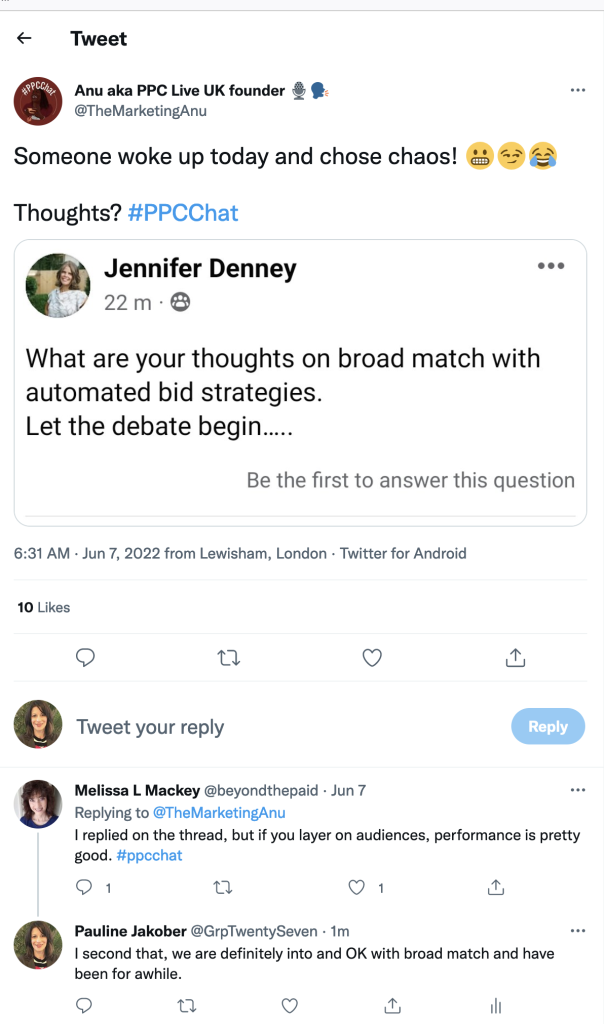Back in the day, I loved cost-per-click (CPC) as a digital marketing metric.
In fact, when I got my start in paid search marketing, I liked nothing more than showing clients how shaving a few pennies off their CPC lowered their overall cost.
But CPC isn’t something we pay much attention to anymore. We broke up years ago and have moved onto much more rewarding relationships, such as broad match and Dynamic Search Ads.

CPC is so high school
Google Ads has changed a lot since the days when PPC pros were obsessed with CPC. We’ve matured, and so has the Google Ads network.
Sure, technically you could still shave pennies off CPCs. But why would you? It would mean switching back to manual bidding and deserting the battle-tested automated bidding strategies we’ve developed over the past few years. It would be a huge step backwards.
Besides, successful Google Ads strategy has changed. The focus is no longer on saving a few pennies—it’s on increasing ROI. After all, no keyword click is too expensive when your traffic is targeted and converting at a strong rate—and your business is enjoying overall growth as a result.
So, if CPC is no longer attractive, what are we doing instead?
Well, for a start, “broad match” has been turning our heads.
We’ve fallen in love with broad match
Similar to our past obsession with CPC, we were once similarly obsessed with tighter keyword match types, like “exact match.”
We’d spend hours and hours micromanaging keywords, trying to get really specific and exact. But this approach has also fallen by the wayside. Instead, we’ve been getting much better performance with “broad match” keywords.
In a few clients accounts, for example, we switched from exact match to broad match campaigns—and broad match blew exact match out of the water.
We’re not the only ones getting these great results. A recent Twitter discussion revealed that many other PPC pros are making the shift from exact match to broad match:

This doesn’t mean you have to abandon all of your obsessive tendencies. You can still get your micromanaging thrill by creating keyword exclusion lists (a.k.a. negative lists) and reviewing them often after launch (maybe even daily for broad match).
However, you’ll eventually need to loosen your grip on these reviews as well as you decrease the cadence from daily to weekly, and then monthly.
Dynamic Search Ads have also caught our eye
Another thing we’re crushing on is Dynamic Search Ads (DSAs).
While DSAs aren’t without their issues, we are big fans of their flexibility and the opportunities they provide in long-tail search terms.
In particular, we’ve had great success transitioning old single keyword ad group (SKAG) campaigns into DSA campaigns for some clients.
In one instance, our client had some old campaigns targeting very specific keywords related to furniture collections. These campaigns never really took off but weren’t expensive—and very occasionally converted—so we let them be.
But on a hunch we moved these campaigns into a DSA campaign targeting the product pages for these furniture collections—and BOOM—performance took off:

As you can see, DSA ROAS was $61,439 while keyword YOY ROAS was only $27,674 in comparison.
This approach won’t work in all accounts. It requires a well-organized website at a minimum. But if your website is in order, this strategy could be worth testing.
Don’t let Google Analytics 4 break your heart
Alas, while broad match and DSAs have our hearts aflutter, Google is determined to play matchmaker. All of us have a date with Google Analytics 4 (GA4) next year that we can’t get out of.
With GA4, we won’t have access to some of our most familiar metrics, such as bounce rate and time on site. It’s all part of a move towards greater user privacy (which isn’t necessarily a bad thing).
Nonetheless, I’m going to really miss these and other metrics. And like most PPC pros, I’m nervous about the change.
However, my team and I have experienced changes in Google Analytics before, and we know the only and best way to deal with those changes is to prepare for what’s to come.
On a practical level, that means setting up GA4 now so you start collecting GA4 data. The “old” Google Analytics will stop processing data on July 1, 2023—and we’ll only have access to that data for a limited period of time.
So, if you want to make year-over-year comparisons this time next year, you need to start collecting GA4 data now. (And forget about comparing pre-GA4 data to post-GA4 data. That will be like comparing apples to oranges.)
Fortunately, setting up GA4 isn’t hard. This webinar with Mary Owusu does an amazing job of explaining GA4, and what you need to do to get ready for it.
Let go of your old Google Ads sweethearts
Sometimes we get so comfortable with different Google Ads strategies, tools, and metrics, it’s hard to recognize when it’s time to let go.
But it makes no sense to continue in a relationship that no longer serves you or your clients.
So break up with CPCs. Look for other strategies, tools, and metrics that fit where you are now—versus where you were years ago.






